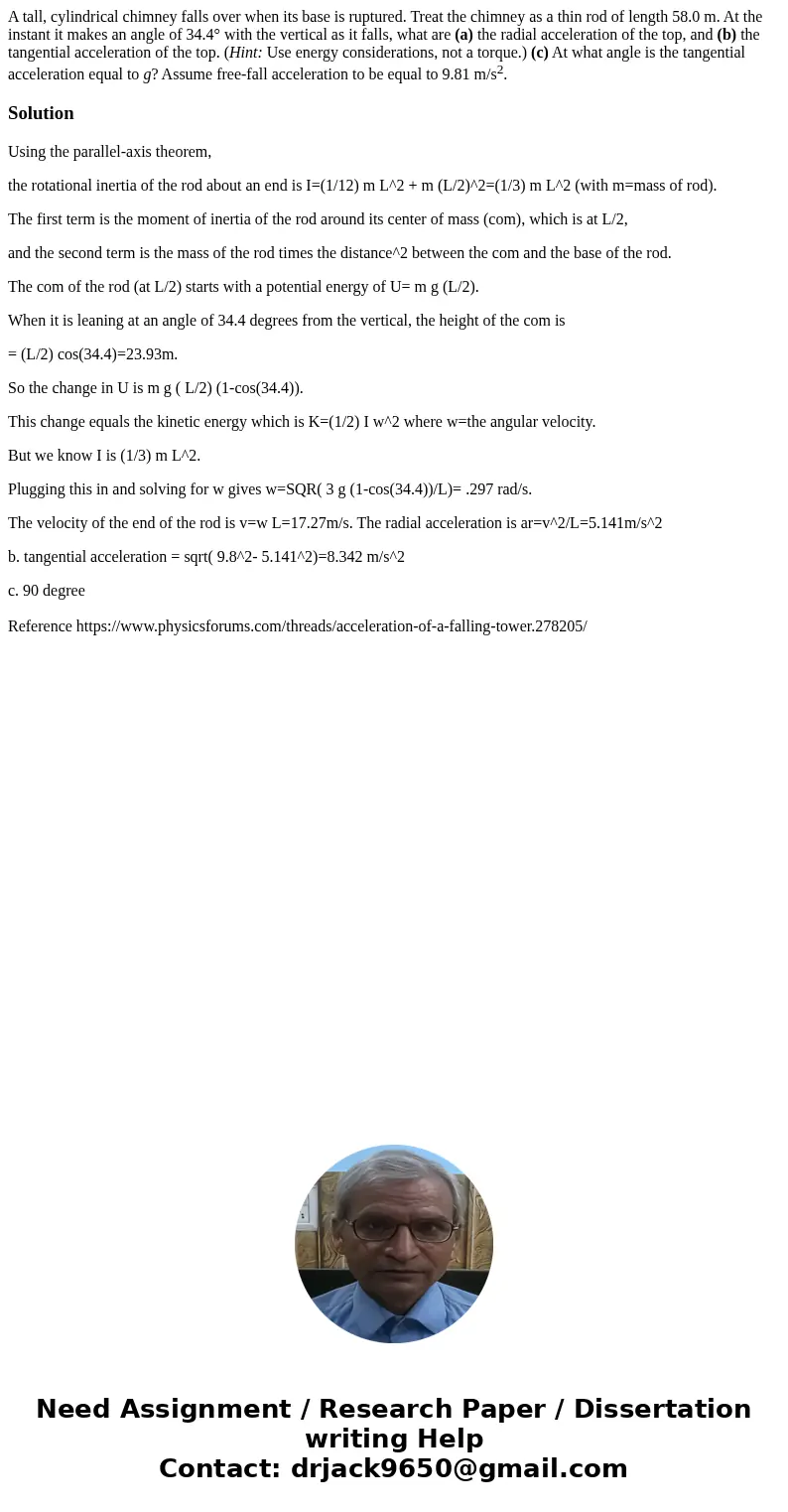A tall cylindrical chimney falls over when its base is ruptu
A tall, cylindrical chimney falls over when its base is ruptured. Treat the chimney as a thin rod of length 58.0 m. At the instant it makes an angle of 34.4° with the vertical as it falls, what are (a) the radial acceleration of the top, and (b) the tangential acceleration of the top. (Hint: Use energy considerations, not a torque.) (c) At what angle is the tangential acceleration equal to g? Assume free-fall acceleration to be equal to 9.81 m/s2.
Solution
Using the parallel-axis theorem,
the rotational inertia of the rod about an end is I=(1/12) m L^2 + m (L/2)^2=(1/3) m L^2 (with m=mass of rod).
The first term is the moment of inertia of the rod around its center of mass (com), which is at L/2,
and the second term is the mass of the rod times the distance^2 between the com and the base of the rod.
The com of the rod (at L/2) starts with a potential energy of U= m g (L/2).
When it is leaning at an angle of 34.4 degrees from the vertical, the height of the com is
= (L/2) cos(34.4)=23.93m.
So the change in U is m g ( L/2) (1-cos(34.4)).
This change equals the kinetic energy which is K=(1/2) I w^2 where w=the angular velocity.
But we know I is (1/3) m L^2.
Plugging this in and solving for w gives w=SQR( 3 g (1-cos(34.4))/L)= .297 rad/s.
The velocity of the end of the rod is v=w L=17.27m/s. The radial acceleration is ar=v^2/L=5.141m/s^2
b. tangential acceleration = sqrt( 9.8^2- 5.141^2)=8.342 m/s^2
c. 90 degree
Reference https://www.physicsforums.com/threads/acceleration-of-a-falling-tower.278205/

 Homework Sourse
Homework Sourse